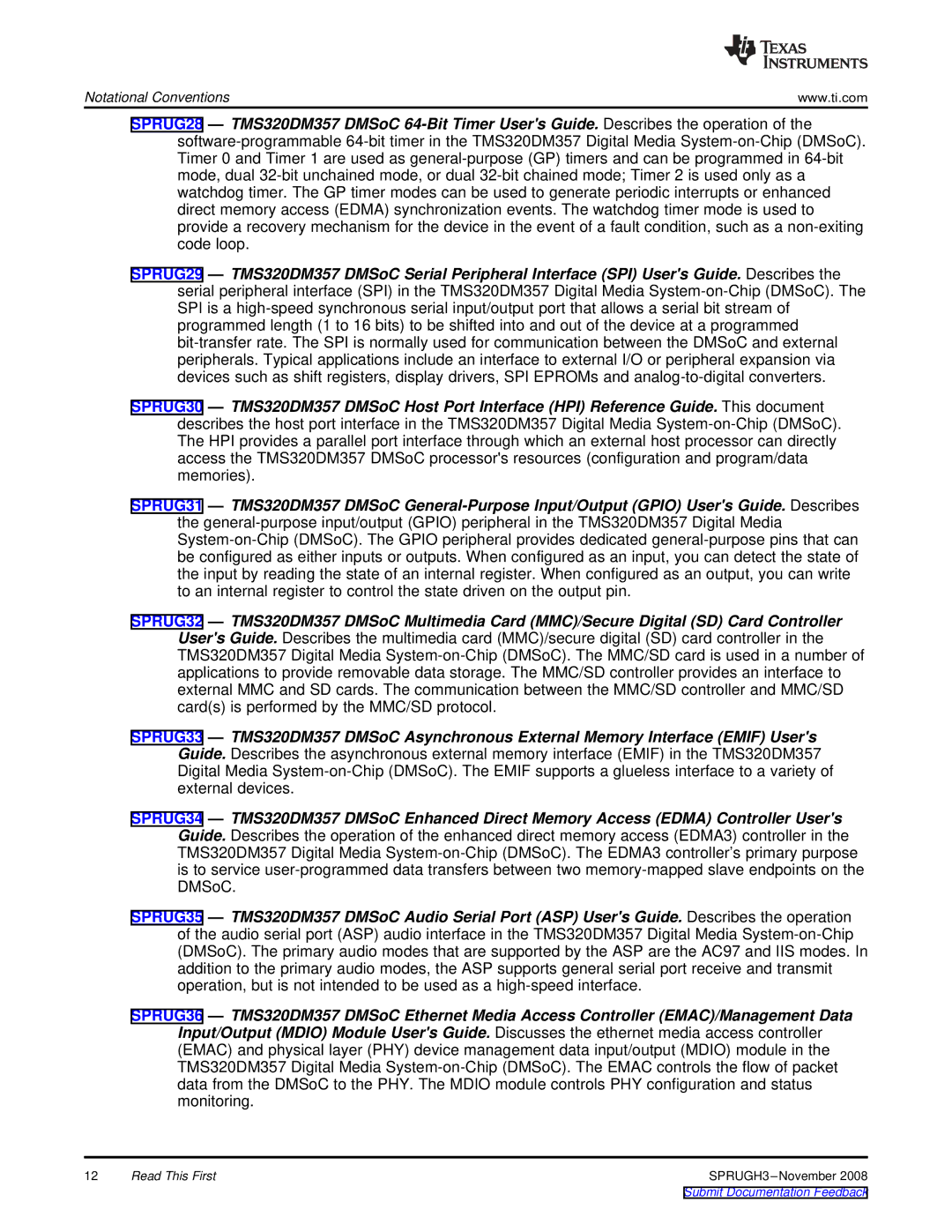
Notational Conventions | www.ti.com |
SPRUG28 — TMS320DM357 DMSoC
SPRUG29 — TMS320DM357 DMSoC Serial Peripheral Interface (SPI) User's Guide. Describes the serial peripheral interface (SPI) in the TMS320DM357 Digital Media
SPRUG30 — TMS320DM357 DMSoC Host Port Interface (HPI) Reference Guide. This document describes the host port interface in the TMS320DM357 Digital Media
SPRUG31 — TMS320DM357 DMSoC
SPRUG32 — TMS320DM357 DMSoC Multimedia Card (MMC)/Secure Digital (SD) Card Controller User's Guide. Describes the multimedia card (MMC)/secure digital (SD) card controller in the TMS320DM357 Digital Media
SPRUG33 — TMS320DM357 DMSoC Asynchronous External Memory Interface (EMIF) User's Guide. Describes the asynchronous external memory interface (EMIF) in the TMS320DM357 Digital Media
SPRUG34 — TMS320DM357 DMSoC Enhanced Direct Memory Access (EDMA) Controller User's Guide. Describes the operation of the enhanced direct memory access (EDMA3) controller in the TMS320DM357 Digital Media
SPRUG35 — TMS320DM357 DMSoC Audio Serial Port (ASP) User's Guide. Describes the operation of the audio serial port (ASP) audio interface in the TMS320DM357 Digital Media
SPRUG36 — TMS320DM357 DMSoC Ethernet Media Access Controller (EMAC)/Management Data Input/Output (MDIO) Module User's Guide. Discusses the ethernet media access controller (EMAC) and physical layer (PHY) device management data input/output (MDIO) module in the TMS320DM357 Digital Media
12 | Read This First |
